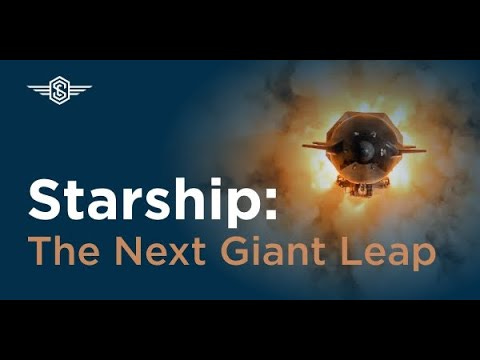The Overview — Capital
Fueling the next generation of aerospace engineers
Capital
Resources that are used to generate income or create value — including financial assets, tools, and intellectual property
Welcome back to The Overview! This week, we’re diving into the future of aerospace capital — not just in dollars, but in rockets, resources, and new capabilities. It’s the fuel behind innovation, expansion, and exploration.
🚀 SpaceX’s Starship is the largest and most powerful rocket ever built — but what exactly will it change? Join Tycho Bogdanowitsch, a graduate student in Aeronautics and Astronautics at Stanford University, as he shares insights from The Starship Report, a deep dive into how Starship could reshape the aerospace industry.
He also created a curated NewSpace Guide to the Galaxy — a go-to collection of resources for anyone navigating the fast-evolving space industry. We’re excited to feature both the report and the guide in this edition of The Overview!
🛰️ In aerospace news: NASA SpaceX Crew-9 returns home, and Isar Aerospace, a rising German aerospace startup founded in 2018, is attempting the first launch of its small satellite launch vehicle, Spectrum, in the coming days!
🛫 Featured Technology
Starship: The Next Giant Leap
Last year, I had the incredible opportunity to work at Space Capital...
A few weeks ago, Tycho Bogdanowitsch, a graduate student in Aeronautics and Astronautics at Stanford University, sat down with Anshuk on The Overview podcast to discuss the current state of the NewSpace business landscape and the major trends in startups and future technologies. A key part of the conversation? Starship, SpaceX’s superheavy lift rocket — and the paradigm shift in what our satellites may look like.
While working at Space Capital, Tycho developed The Starship Report, which explored why Starship will be important, technologies that could most benefit from Starship, and who is already building towards this future. Read the full article below!
Tycho also mentioned his “NewSpace Guide to the Galaxy” on the podcast, a list of all the information sources he uses to keep up with the changing aerospace world. We are thrilled he’s published the comprehensive list on The Overview, and we are sure our readers will also find this immensely valuable.
The New Space Guide To The Galaxy
Here are some helpful resources for understanding and keeping up with the emerging commercial space industry...
🚀 Aerospace News
The aerospace industry is chugging along as usual, with the biggest news being the return of NASA SpaceX Crew-9. The mission brought the return of astronauts Butch Wilmore and Sunita Williams who had been on an extended mission (note: not stranded) at the International Space Station since June 5th of last year, when NASA decided to return the Starliner capsule that took the astronauts to the station without the astronauts onboard. Since then, the decision of when to bring back the astronauts has been a political talking point. But the important news is: the astronauts are back home safe!
Now, let’s talk about an exciting new company in Europe’s launch scene: Isar Aerospace.
A Promising New European Rocket Startup
Since SpaceX began its run as the dominant launch provider in the world about seven years ago, most other companies and agencies have not been able to keep up. One of the most affected regions was Europe. Ariane-5 was the only operational rocket for the longest time (apart from Russia’s Soyuz, which also took a hit in usage since the Russia-Ukraine war began), and now Ariane-6 is operational — but not at the cadence that some of the younger aerospace companies like Rocket Lab and Firefly are achieving.
Isar Aerospace emerged to change the European launch landscape. Founded in 2018, the German aerospace startup has developed a small satellite launcher called Spectrum. The rocket is a 6.6-meter-diameter traditional two-stage rocket that uses a propane/oxygen propellant combo for its engines.
Within the next few days, Isar Aerospace is going to attempt the first test flight of this rocket by launching from Andøya, Norway, at an orbital launch pad built exclusively for them.
Like many U.S. aerospace startups, Isar is leaning into vertical integration, rapid prototyping, and automated manufacturing. The team has emphasized that this launch is very experimental, and they don’t expect to get to orbit — even a 30-second flight will count as a major success.
Launching an orbital-class rocket is an extremely challenging task, so good luck to the Isar team on their first test attempt!
💬 Quote of the Week
“Over a long period of time, the main force in favor of greater equality has been the diffusion of knowledge and skills.”
— Thomas Piketty, Capital in the Twenty-First Century
Thanks for joining us for The Overview — The Capital Edition. Whether it’s financial investment, technological innovation, or intellectual resources, this week was all about the capital driving the future of aerospace.
If you enjoyed this edition, share The Overview with a friend or colleague who’s passionate about rockets, startups, and the space economy. Got any thoughts, questions, or topic requests? We’d love to hear from you — feel free to reach out at admin@theoverview.org!
Stellar vibes,
Tycho, Tagg, Anshuk, Maggie, Isaac





